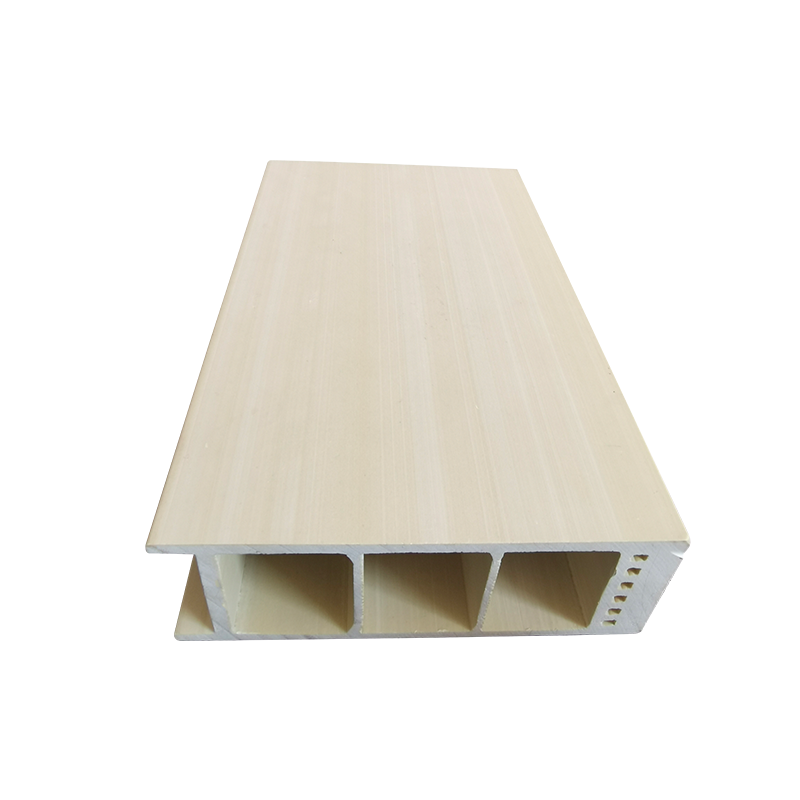The convergence of material science and sustainable building practices has ushered in a new era for construction components. One material making a profound impact on architectural standards is Wood-Plastic Composite, specifically in the form of the WPC Door Frame. This innovative product is rapidly replacing conventional timber and metal frames, offering a compelling blend of aesthetic appeal, exceptional durability, and environmental responsibility.
The fundamental appeal of the WPC Door Frame lies in its unique composition: a blend of finely ground wood waste and recycled thermoplastics (like PVC or polypropylene). This mixture is subjected to high-pressure thermal processing, creating a dense, homogeneous material that is superior to its predecessors in many critical aspects.
Technical Superiority of the WPC Door Frame
Architects, contractors, and homeowners are increasingly specifying WPC due to the material’s inherent technical advantages:
1. Unmatched Resistance to the Elements
The Achilles’ heel of traditional wood frames is their vulnerability to moisture. They swell, warp, and eventually rot. The plastic component in a WPC Door Frame encapsulates the wood fibers, acting as an impermeable barrier. This makes the frame 100% waterproof and highly resistant to humidity, a crucial feature for coastal regions, bathrooms, basements, and exterior doors. This resistance also prevents the growth of mildew and fungi. [Diagram illustrating the cross-section of WPC material]
2. Termite-Proof and Pest-Resistant
Unlike natural wood, the composite structure of the WPC Door Frame offers no nutritional value to termites or other wood-boring insects. This natural resistance eliminates the need for expensive and often toxic anti-termite treatments, ensuring the long-term structural integrity of the frame without ongoing maintenance costs.
3. Stability and Workability
Despite its density and robustness, a WPC Door Frame retains the workability of wood. It can be easily cut, routed, drilled, and screwed using standard woodworking tools. Crucially, it offers superior dimensional stability compared to solid wood, meaning it won’t shrink or expand significantly with temperature or humidity changes, ensuring a perfect fit for the door for years to come.
4. Fire Retardancy
Many high-quality WPC Door Frames are manufactured with inherent fire-retardant properties. The composition can be adjusted to meet stringent building codes related to fire safety, adding an extra layer of protection for residents and occupants in both residential and commercial settings.
Aesthetics and Installation Benefits
The pragmatic benefits of the WPC Door Frame are complemented by its versatility in design and ease of installation:
1. Design Flexibility and Finish Options
WPC is highly receptive to various finishing techniques. It can be laminated with decorative films, veneered, or painted to achieve any desired look, from realistic wood grain finishes to sleek, modern solid colors. This design flexibility ensures that the WPC Door Frame can harmonize with any interior decor or exterior façade.
2. Seamless Integration and Reduced Waste
The consistent density and uniform structure of the WPC material result in precise manufacturing. This consistency allows for frames that fit perfectly into the wall opening, minimizing on-site adjustments and material waste. Furthermore, the material is generally supplied pre-finished, which reduces installation time and labor costs.
3. Contribution to Green Building
Choosing a WPC Door Frame aligns with sustainability goals. The utilization of recycled plastics and wood waste conserves natural resources and reduces the demand for virgin timber. Its long lifespan and non-toxic nature (often free of formaldehyde and heavy metals) further enhance its credentials as a genuinely eco-friendly building material.
Conclusion
The evolution from traditional timber to the modern WPC Door Frame is a clear indication of the industry’s drive towards higher performance and sustainability. By offering unparalleled resistance to moisture and pests, superior durability, and significant design flexibility, the WPC frame is establishing itself not merely as an alternative, but as the benchmark for quality, longevity, and environmental consciousness in contemporary construction.








